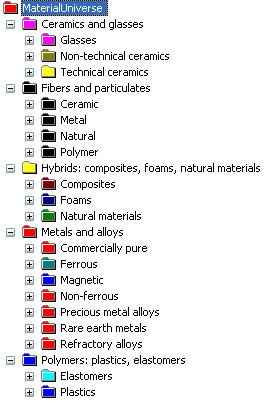Materials Selection - Overview
The design requirement usually drives the materials selected. The material selection
in turn drives the possible manufacturing processes that can be selected.
Material Selection - Scope
Material selection based on component performance characteristics is beyond the scope of this application. A useful software application
based upon Prof Michael Ashby's material selection method is described in his book "Materials
Selection in Mechanical Design - 4th Edition" -
ISBN: 1-8561-7663-0
.
The software is available from Granta Design Ltd -
http://www.grantadesign.com

Material Costs
The cost of material is affected by market demand and the difficulties associated
with its extraction from the earth's crust or from re-cycled products. This information is freely available
on the Internet and with relatively modest investments in time it is possible to maintain an up-to-date
materials cost database for estimating purposes.
In the overview section we encountered the phase "the cost of the material per unit
volume in the required form." Many sources can provide relative cost indexes for
supply of materials in various forms. For instance, the relative cost of sheet and
bar to the blooms and billets from which they are produced. So from a few base numbers
it is possible to generate actual costs of materials in particular forms.
Getting Started
Some material cost websites provide information to enable creation and validation
of material costs. Most of the websites are designed for commodity trading and do not provide up to the minute material prices. However most provide a history of prices
from days to months old for free. This could be used in conjuction with inflation
factors to arrive at "stable" current or forward prices suitable for estimating
the cost of a part to be manufactured at some point in the future.
However users need not adopt a perfectionist approach as the designer should actually
be looking for the most efficient method of manufacture. Until we arrive at Utopia
inflation will always be with us and therefore at the concept design stage we need
only be concerned with relative costs to manufacture something.